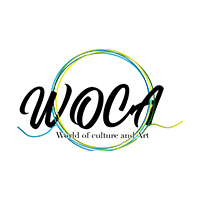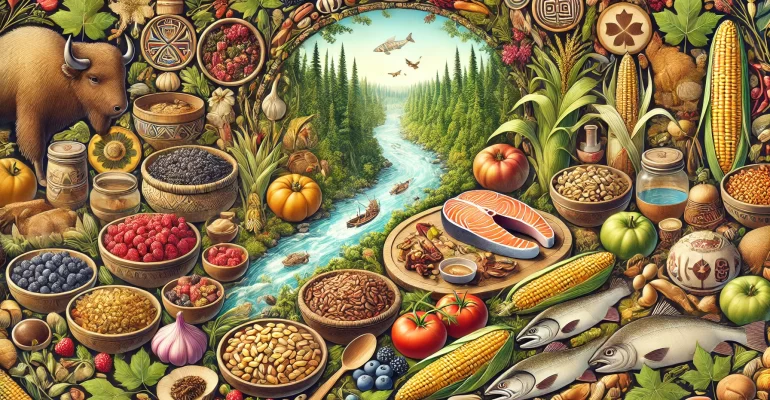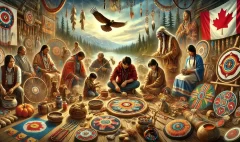Food for the Soul: The Amazing World of Indigenous Foods in Canada
Food for the Soul: The Amazing World of Indigenous Foods in Canada
Hello, food lovers and culture enthusiasts! Are you ready to go on a tasty adventure? Today, we’re diving into the incredible world of Indigenous foods in Canada. Here at WOCA Group, we believe that food is more than just something to eat – it’s a way to connect with culture, history, and the land. So, grab a snack (maybe some wild berries or maple syrup?) and let’s explore the delicious and meaningful world of Indigenous foods!
What Makes Indigenous Foods So Special?
Before we dig in, let’s talk about why Indigenous foods are so important. These aren’t just any old recipes – they’re like time capsules of taste that carry centuries of wisdom and tradition! Indigenous foods are special because:
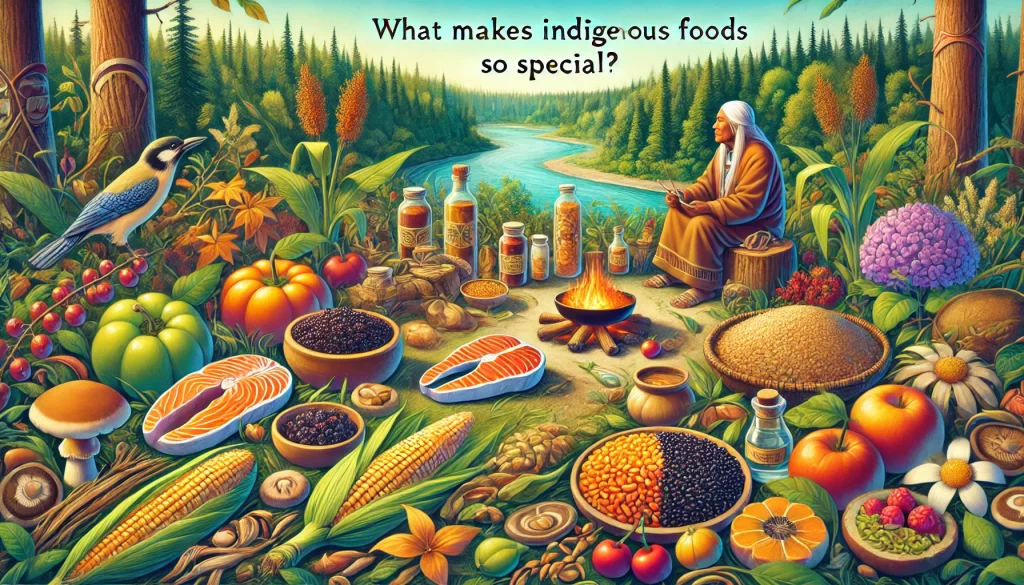
- They come from the land: Indigenous Peoples have deep knowledge about local plants and animals.
- They’re tied to culture: Many foods play important roles in stories, ceremonies, and daily life.
- They’re super healthy: Traditional foods are often very nutritious.
- They connect people: Gathering, preparing, and sharing food brings communities together.
- They’re sustainable: Traditional food practices often take care of the environment.
“Our food is our medicine, our connection to the land, and our way of showing love,” explains Elder Mary Berrykeeper. “When we eat our traditional foods, we’re not just feeding our bodies – we’re feeding our spirits and keeping our culture strong.”
A Feast of Flavors: Common Indigenous Foods
Now, let’s take a look at some of the yummy foods that are important in many Indigenous cultures across Canada. Remember, there are many different Indigenous nations, and each has its own special foods and traditions!
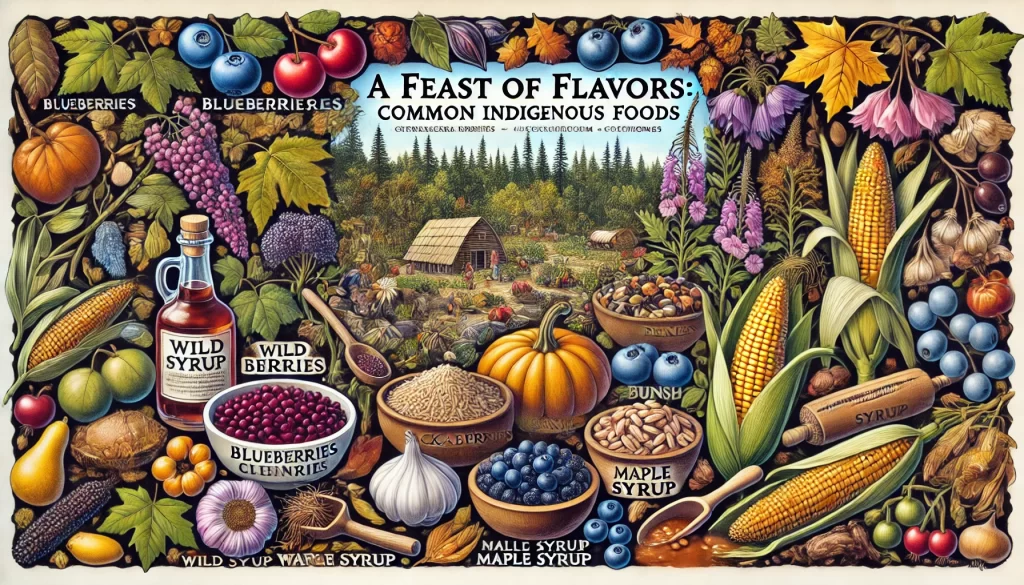
From the Land:
- Berries: Like blueberries, saskatoon berries, and cranberries. These are often eaten fresh, dried for winter, or used in medicines.
- Wild Rice: Not actually rice, but a grass seed that grows in lakes. It’s super nutritious and important to many nations, especially in Ontario and Manitoba.
- Maple Syrup: A sweet treat that’s also packed with minerals. Many nations have spring ceremonies around maple syrup harvesting.
- Corn, Beans, and Squash: Often called the “Three Sisters” because they grow well together. These plants are like best friends in the garden!
- Root Vegetables: Things like wild onions, Jerusalem artichokes, and camas bulbs are important in many diets.
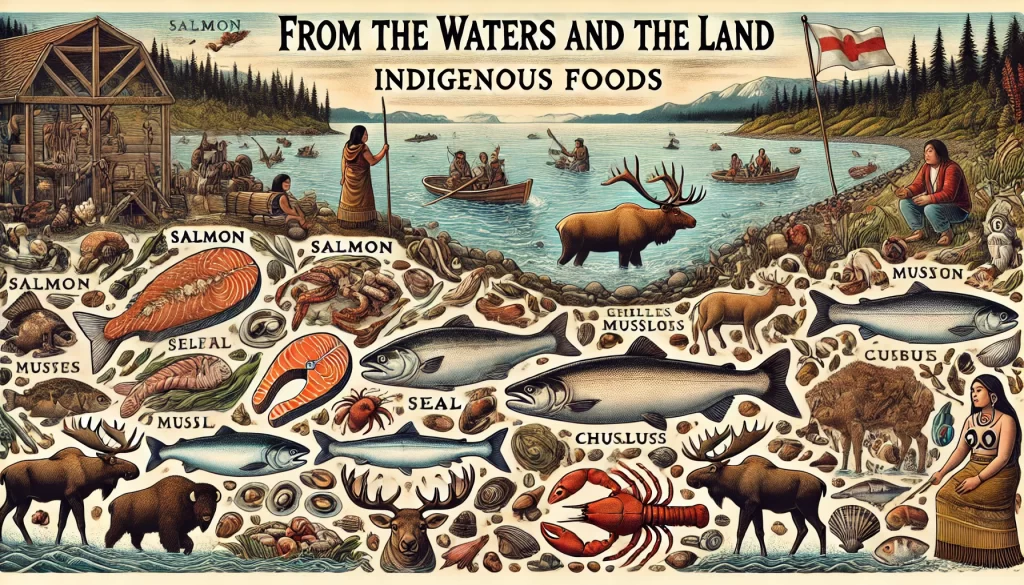
From the Waters:
- Salmon: Super important to many West Coast nations. There are often big celebrations when the salmon return to spawn.
- Whitefish: A staple for many nations around the Great Lakes and in the North.
- Seal: Important to Inuit communities, used for food and other purposes.
- Shellfish: Like clams, mussels, and crabs. Coastal nations often have traditional clambakes.
From the Land Animals:
- Bison: A key food for many Plains nations. Every part of the bison was used, from meat to hide to bones.
- Moose: Important to many nations, especially in forested areas. Moose meat is very lean and healthy.
- Caribou: A crucial food source for many northern nations, especially Inuit communities.
- Small Game: Like rabbit, grouse, and duck. These were often caught with traps or snares.
“Each of these foods has its own story and its own way of being prepared and shared,” says Tom Wildchef, an Indigenous chef. “When we eat them, we’re not just having a meal – we’re participating in a tradition that’s thousands of years old.”
Food and Ceremony: A Sacred Connection
In many Indigenous cultures, food isn’t just for everyday meals – it plays a big role in important ceremonies and celebrations too.
Here are some ways food is part of ceremonies:
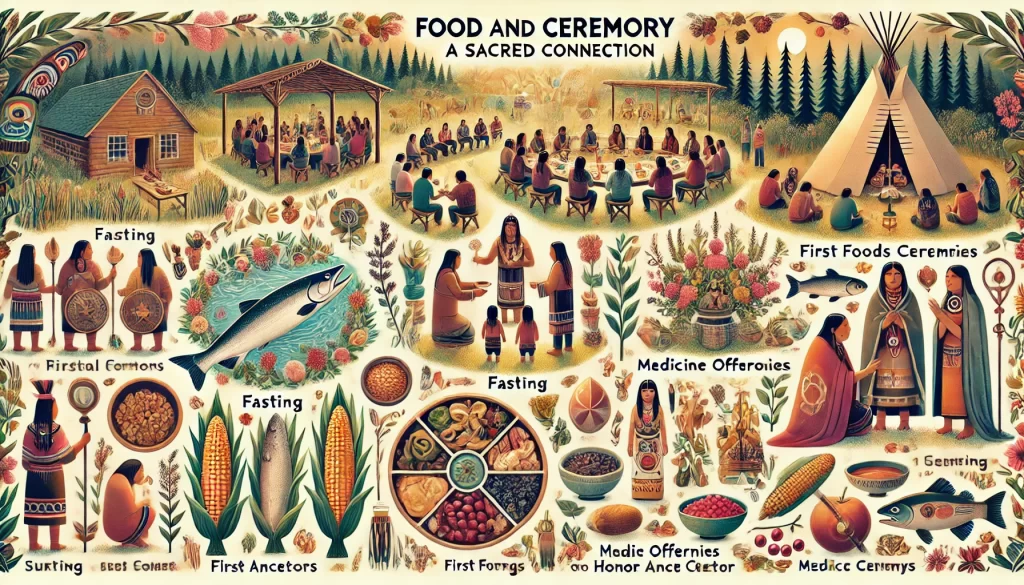
- Feasts: Many ceremonies include big community meals where traditional foods are shared.
- Offerings: Some foods are given as offerings to the Creator or to honor ancestors.
- Fasting: Some ceremonies involve not eating for a period of time, making the return to food even more meaningful.
- First Foods Ceremonies: Many nations have special ceremonies to celebrate when important foods become available each year, like the first salmon or the first berries.
- Medicine Ceremonies: Some foods are used as part of healing practices.
“Food connects us to the land, to each other, and to the spirit world,” explains Elder John Feastkeeper. “When we use food in our ceremonies, we’re honoring these connections and giving thanks for the gifts we’ve been given.”
The Wisdom of Traditional Food Practices
Indigenous Peoples have incredibly smart ways of finding, growing, and preparing food. These practices aren’t just about eating – they’re about taking care of the land and each other.
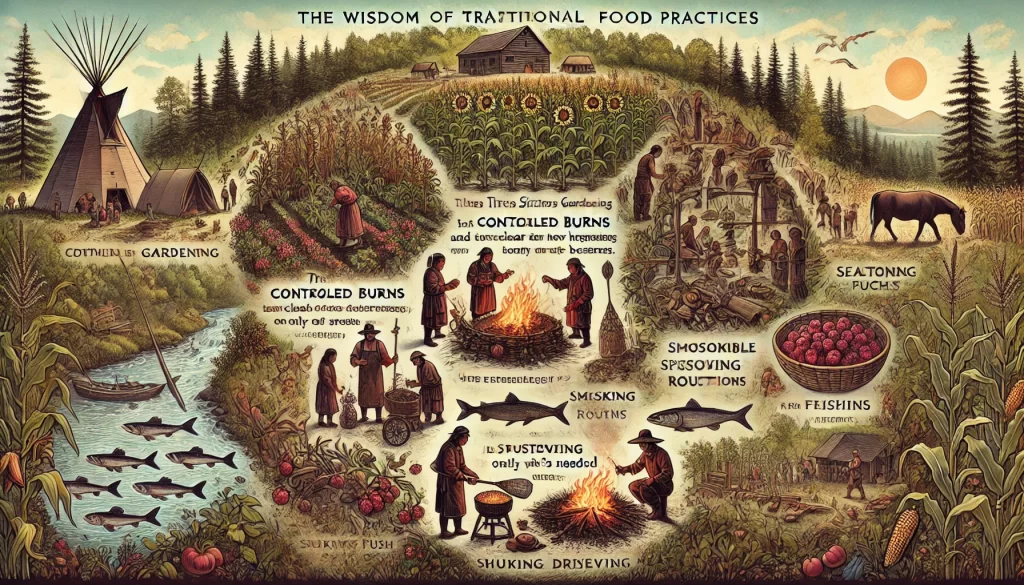
Some cool traditional food practices:
- The Three Sisters Gardening: Planting corn, beans, and squash together. The corn provides a pole for the beans, the beans give nitrogen to the soil, and the squash leaves provide ground cover. It’s like a little plant community!
- Controlled Burns: Some nations use carefully managed fires to clear land and improve growth of berries and other plants.
- Sustainable Harvesting: Taking only what’s needed and making sure there’s enough left for plants and animals to regrow.
- Food Preservation: Methods like smoking fish, drying meat, and preserving berries in grease have helped communities have food all year round.
- Seasonal Rounds: Moving to different areas throughout the year to harvest foods when they’re most plentiful.
“Our ancestors were master scientists and ecologists,” says Lisa Earthkeeper, an Indigenous environmental scientist. “Their food practices kept people and the land healthy for thousands of years.”
Challenges and Revival: Indigenous Foods Today
While traditional foods are super important, many Indigenous communities face challenges in accessing and enjoying them today. Some of these challenges include:
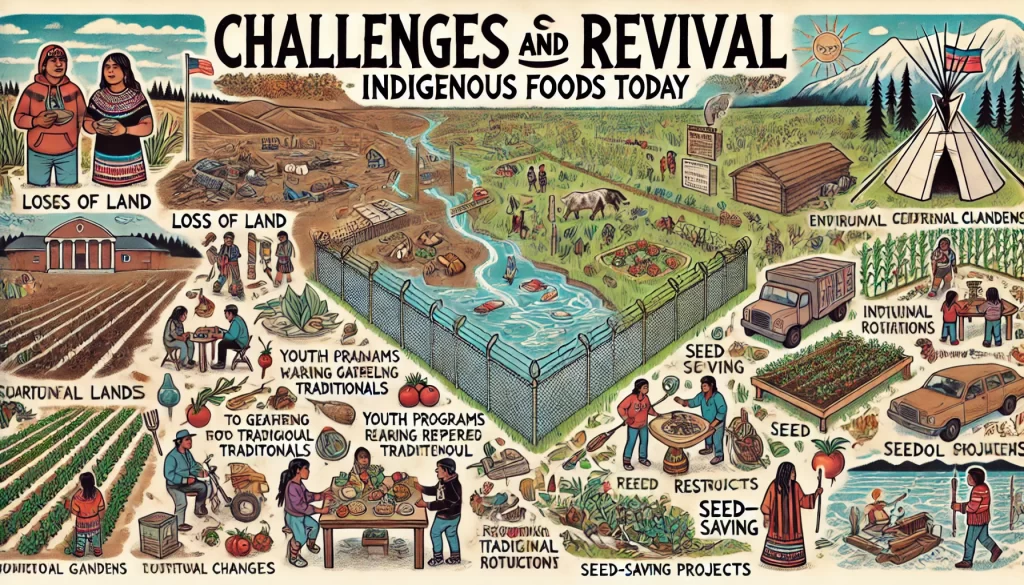
- Loss of land: Many traditional food gathering places have been taken away or damaged.
- Environmental changes: Climate change and pollution are affecting plants and animals.
- Government restrictions: Some laws have made it hard to hunt, fish, or gather traditional foods.
- Loss of knowledge: Some food-related teachings and skills haven’t been passed down due to things like residential schools.
But there’s good news! Many Indigenous communities are working hard to bring back traditional foods and practices. Here are some cool things happening:
- Community gardens: Growing traditional plants in urban and rural areas.
- Youth programs: Teaching young people about traditional foods and how to gather and prepare them.
- Indigenous-run restaurants: Serving traditional foods with a modern twist.
- Seed saving projects: Preserving traditional plant varieties.
- Food sovereignty movements: Working to regain control over food systems.
“It’s like we’re replanting our food traditions,” says Sarah Regrowth, who runs a youth food program. “Every seed we plant, every traditional meal we share, is helping our culture grow strong again.”
Health and Healing: The Power of Traditional Foods
Traditional Indigenous foods aren’t just tasty – they’re often super healthy too! Many of these foods are:
- High in nutrients: Packed with vitamins and minerals.
- Low in processed ingredients: They’re whole, natural foods.
- Suited to local environments: People’s bodies are adapted to foods from their ancestral lands.
- Connected to physical activity: Gathering traditional foods often involves exercise.
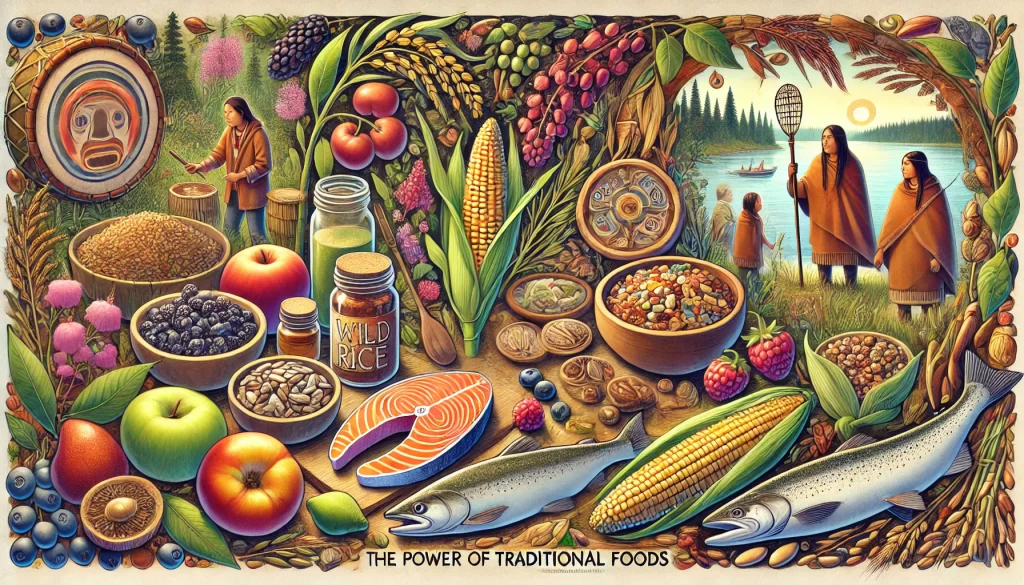
Many Indigenous communities are turning to traditional foods to help address health issues. “When we return to our traditional diets, we often see improvements in things like diabetes and heart disease,” explains Dr. Mary Healthyheart, an Indigenous nutritionist.
Sharing the Feast: How WOCA Group Celebrates Indigenous Foods in Canada
Here at WOCA Group, we love celebrating the richness of Indigenous food traditions. Here are some ways we get involved:
- Community Feasts: We organize events where people can taste traditional Indigenous foods and learn about their significance.
- Cooking Workshops: We host classes where Indigenous chefs teach traditional cooking methods.
- Garden Projects: We support community gardens that grow traditional plants.
- Educational Programs: We offer sessions about the history and importance of Indigenous foods.
- Advocacy: We support initiatives that promote access to traditional foods for Indigenous communities.
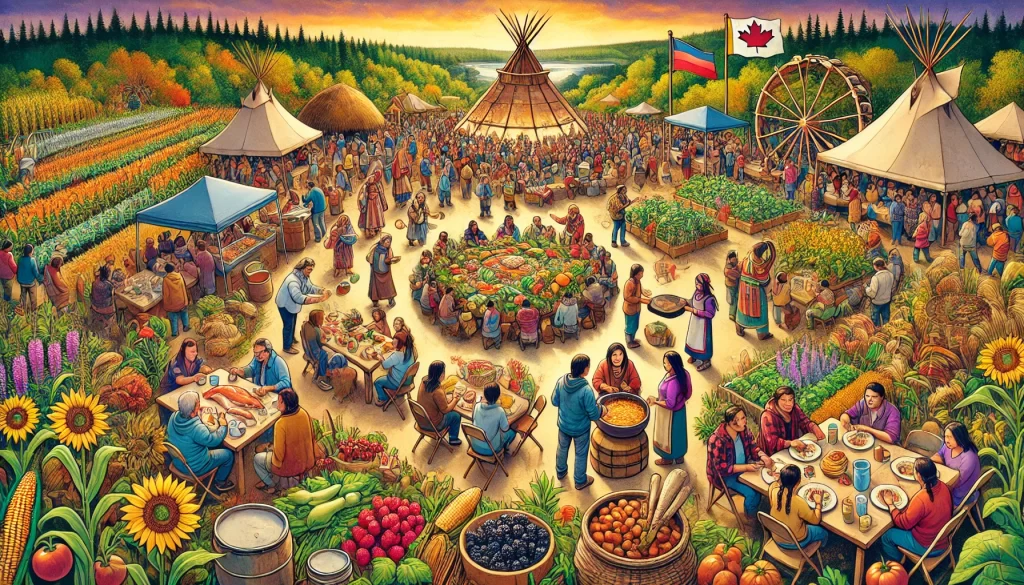
“Food is a wonderful way to bring people together and share culture,” says Lisa Communitytaste, WOCA Group’s event coordinator. “When we share these meals, we’re not just eating – we’re building understanding and respect between cultures.”
You Can Join the Feast of Indigenous Foods in Canada
Want to learn more about Indigenous foods? Here are some tasty ways to get involved:
- Try Indigenous cuisine: Look for restaurants or food trucks serving traditional foods.
- Attend a community event: Join WOCA Group for one of our food-related cultural events.
- Learn about local plants: Find out which traditional food plants grow in your area.
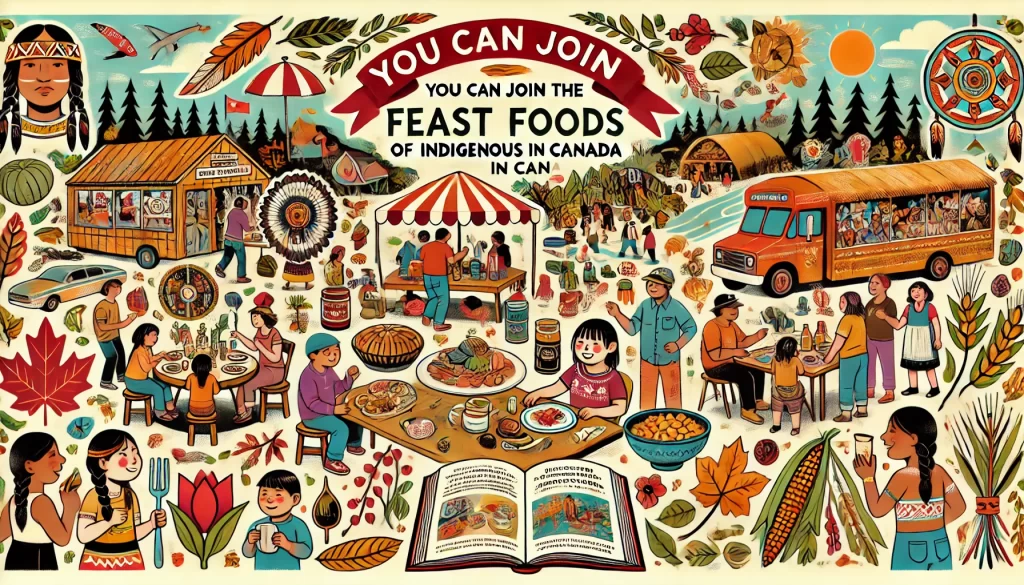
- Support Indigenous food producers: Look for products made by Indigenous-owned companies.
- Read and listen: Check out books and podcasts about Indigenous food traditions.
- Respect the land: Remember that all food comes from the earth, and treat the environment with care.
“When you explore Indigenous foods, you’re not just trying new tastes,” says Chef Tom Flavorful. “You’re participating in a living tradition and showing respect for the first peoples of this land.”
A Final Bite: The Ongoing Story of Indigenous Foods in Canada
Indigenous food traditions in Canada are like a never-ending feast. They’re rooted in ancient wisdom but continue to nourish and inspire people today. These foods tell a story of resilience, connection to the land, and the strength of Indigenous cultures. The next time you eat a wild berry, taste some maple syrup, or join us at a WOCA Group community feast, remember that you’re not just having a snack – you’re taking part in a rich tradition that has sustained people and cultures for thousands of years.
Now it’s your turn! What’s your favorite Indigenous food? Have you learned about any new foods or traditions from this article? Share your thoughts and experiences in the comments below. Let’s keep the conversation going and celebrate the incredible world of Indigenous foods in Canada together! And don’t forget to stay tuned to WOCA Group for more delicious cultural explorations and community events. Together, we can savor the flavors of understanding and respect!
